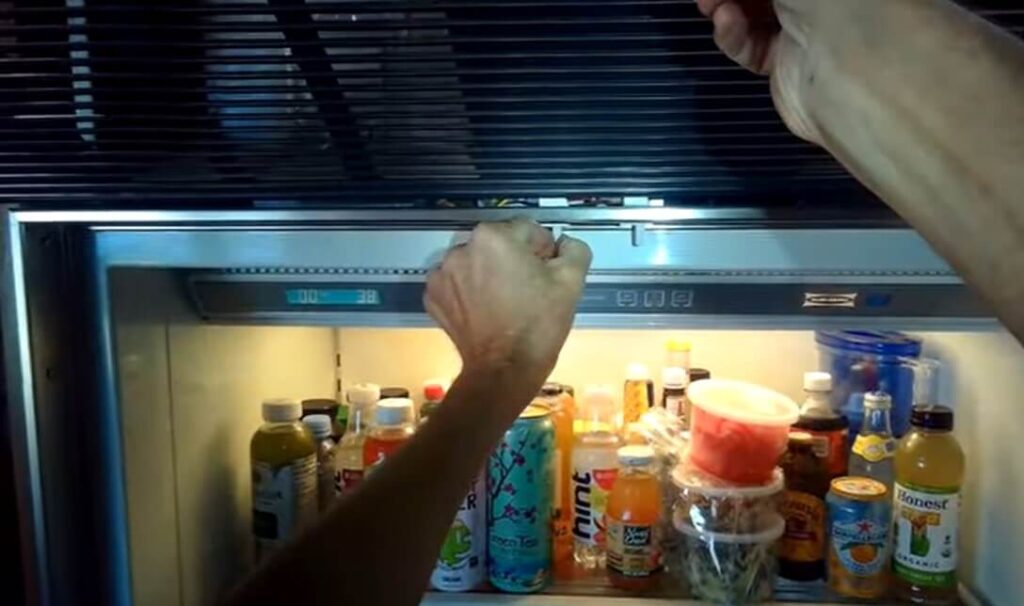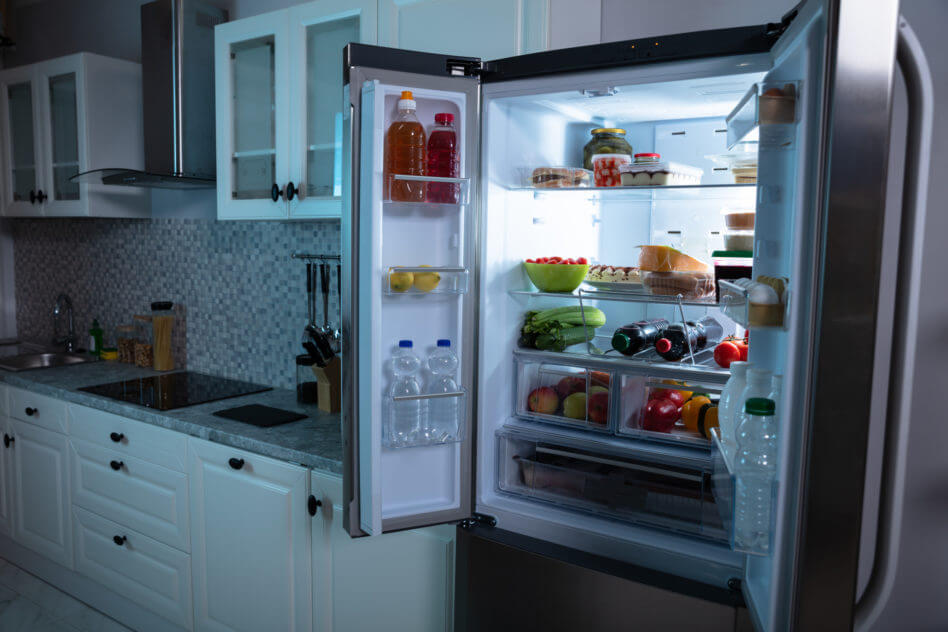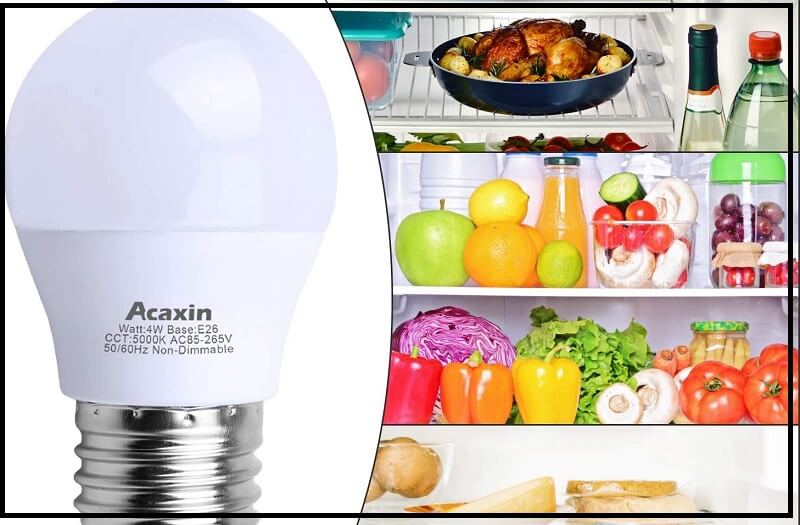Yes, your fridge will still work without the light. The light bulb is not essential for the refrigerator to function.
A refrigerator is an essential appliance in most households. It keeps our food fresh and prevents spoilage. But have you ever wondered if your fridge would still work if the light inside stopped working? In this article, we will explore the functionality of refrigerators without light and answer the question: will my fridge work without the light?
We’ll delve into the role of the light in a fridge, discuss any potential issues, and explain why the light bulb is not essential for the refrigerator to function properly. So, let’s dive in and find out whether your fridge needs to shine a light in order to keep your food cold and fresh.

Will My Fridge Work Without the Light: Understanding The Importance
The Role Of The Light In Food Preservation
We often take the light inside our refrigerator for granted, only noticing it when we need to replace a burnt-out bulb. However, that little light serves more than just its decorative purpose. In fact, it plays a vital role in the preservation of our food and the overall functionality of our fridge.
Understanding how light affects the contents of our refrigerator can help us appreciate its importance even more.
Here are some key points to consider:
- Illuminating the shelf space: The light in the fridge helps illuminate the interior, ensuring that all the shelves and compartments are visible. This allows us to easily locate and access the items we need. No more blindly rummaging through the fridge and accidentally knocking things over!
- Food safety: The light in your fridge indirectly affects the safety of your food. By being able to see all the items clearly, you can quickly identify any spoiled or expired food and dispose of it promptly. This helps prevent the spread of bacteria and keeps your fridge free from potential foodborne illnesses.
- Temperature management: Most modern refrigerators are designed with a light switch that activates when you open the door. This switch also triggers the cooling system, ensuring that the appropriate temperature is maintained in the fridge. Without the light, the cooling function may not activate properly, compromising the freshness and longevity of your food.
- Energy efficiency: Did you know that the light inside your fridge is typically LED? LEDs are energy-efficient, consuming minimal electricity and producing less heat compared to older incandescent bulbs. This helps reduce the overall energy consumption of your refrigerator, contributing to a greener planet and potentially lowering your electricity bills.
The Convenience Factor: Finding What You Need Quickly
Now let’s shift our focus to the convenience aspect of having a well-lit fridge:
- Time-saving: With a well-illuminated fridge, you can quickly scan the contents and find what you need without wasting precious minutes. Whether it’s grabbing a snack on the go or planning a meal, having a brightly lit refrigerator can significantly speed up your kitchen routine.
- Organizational aid: A well-lit fridge can also inspire better organization. With good lighting, it’s easier to sort your groceries and arrange them logically. You can use designated areas for specific food groups, preventing cross-contamination and fostering more efficient use of space.
- Enhanced visibility: The light inside your fridge doesn’t just make it easier to find items; it also enables you to see their condition clearly. You can spot any discoloration, mold growth, or signs of spoilage more easily, allowing you to take appropriate action promptly.
- Aesthetics and appeal: Want your fridge to look inviting and appealing? The light inside plays a crucial role in enhancing the overall aesthetic appeal of your refrigerator. It adds a touch of warmth and brightness, making your fridge a visually pleasing part of your kitchen.
As you can see, the light in your fridge serves more than just a decorative purpose. Understanding its importance can help you appreciate its role in food preservation and convenience. So, the next time you open your fridge, take a moment to acknowledge the unsung hero—the light.
Shedding Light On The Inner Workings Of Your Fridge
Have you ever wondered how your fridge works without the light? The light bulb inside your refrigerator may not seem like a significant component, but it plays a vital role in keeping your food fresh and visible. We’ll delve into the inner workings of your fridge and uncover the secrets behind its light bulb.
The Light Bulb: A Brief History
Before we explore the functionality of the light bulb in your fridge, let’s take a quick trip back in time to understand its humble beginnings. The invention of the first practical light bulb by Thomas Edison in the late 19th century transformed the way we illuminate our surroundings.
Since then, light bulbs have become an integral part of our daily lives, brightening up homes, offices, and even our refrigerators.
- Invented by Thomas Edison in the late 19th century.
- Revolutionized the way we illuminate our surroundings.
- Became an integral part of our daily lives.
How Does The Light Bulb In Your Fridge Work?
Now that we understand the history, let’s shed some light on how the light bulb in your fridge operates. Here are the key points to explain its functionality:
- The light bulb in your fridge is powered by an electrical circuit that is independent of the refrigerator’s cooling system.
- When you open the fridge door, a switch is triggered, completing the circuit and allowing electricity to flow to the light bulb.
- The filament inside the light bulb heats up, emitting light that illuminates the interior of your fridge.
- The light bulb is designed specifically for refrigeration, capable of withstanding the low temperatures inside the fridge.
- The bulb’s compact size ensures it fits seamlessly into the refrigerator’s housing, providing maximum efficiency and illumination.
- The light bulb’s lifespan may vary depending on usage, but it is generally designed to last for a considerable amount of time before needing replacement.
So, the next time you open your refrigerator door and the light floods the interior, remember the intricate workings behind it. The light bulb in your fridge not only brightens your food but also offers convenience and visibility as you navigate your way through your culinary delights.

The Impact Of A Broken Light Bulb On Your Fridge
Have you ever wondered what would happen if the light bulb in your fridge stopped working? It may seem like a minor issue, but the impact can actually be quite significant. We will explore the signs of a broken light bulb in your fridge and the potential risks and safety concerns that may arise.
So, let’s dive in and uncover the mysteries of a malfunctioning fridge light!
Signs Of A Broken Light Bulb
- Flickering or no light: One of the most obvious signs of a broken fridge light bulb is a flickering or completely non-functional light. If you notice that the light in your fridge is behaving erratically or not turning on at all, it may be time to replace the bulb.
- Physical damage: Another indicator of a broken bulb is physical damage. Inspect the bulb closely to see if there are any cracks, breaks, or signs of burning. Damaged bulbs are more prone to malfunctioning or causing safety hazards.
Potential Risks And Safety Concerns
- Spoiled food: A broken light bulb may not directly affect the cooling functionality of your fridge, but it can impact your food. Without proper lighting, it becomes difficult to see the contents of your fridge. This can lead to accidentally overlooking spoiled or expired food, posing health risks.
- Electrical hazards: It’s crucial to address a broken light bulb promptly to avoid any potential electrical hazards. If the bulb is damaged or the socket is faulty, there is a risk of electrocution or even a short circuit. Safety should always be a priority when dealing with any electrical component.
- Difficulty in maintenance: The light bulb in your fridge not only illuminates the interior but also makes it easier to clean and maintain. With a broken bulb, it may be challenging to navigate the fridge’s shelves, making cleaning and maintenance tasks more cumbersome.
A broken light bulb in your fridge can have more than just aesthetic consequences. It can make it difficult to see the contents, potentially leading to spoiled food, and poses safety concerns if left unaddressed. If you notice any signs of a broken bulb, it’s important to replace it promptly to ensure the proper functioning and safety of your fridge.
Stay vigilant and keep an eye out for any flickering lights or physical damage to keep your fridge running smoothly.
Are There Alternatives To The Light Bulb In Your Fridge?
Is it possible for your fridge to function without a light bulb? That’s an interesting question and one that many people have wondered about. In this blog post, we’ll explore the alternatives to the light bulb in your fridge.
Let’s discuss some energy-saving options and how you can use ambient light to your advantage.
Energy-Saving Options
Alternative lighting solutions not only save energy but also provide sufficient illumination. Here are some energy-saving options for your fridge:
- Led lights: Led lights have become a popular choice for fridges due to their low energy consumption and long lifespan. These lights are not only energy-efficient, but they also emit a bright and clear light, making it easier to locate items in your fridge.
- Light strips: Light strips are another option for illuminating your fridge. These thin and flexible strips can be placed inside the fridge to provide uniform lighting. Light strips are convenient, as they can be cut to the desired length and easily installed.
- Motion-activated lights: Motion-activated lights are a great energy-saving option for your fridge. These lights turn on automatically when the fridge door is opened and switch off when it’s closed. This eliminates the need for a constant light source and helps conserve energy.

Using Ambient Light To Your Advantage
Besides alternative lighting solutions, you can also make use of ambient light to illuminate your fridge. Here’s how you can do it:
- Fridge placement: Position your fridge near a window or a well-lit area in your kitchen. This allows natural light to enter and illuminate the contents of your fridge during the day, reducing the need for artificial lighting.
- Kitchen lighting: Ensure that your kitchen has adequate lighting. A well-lit kitchen will reflect light onto your fridge, making it easier to see the contents without relying solely on the fridge light.
- Mirror placement: Placing a mirror strategically near your fridge can help reflect light and brighten up the interior of the fridge. This can be a simple and effective way to enhance visibility without adding any extra lighting.
There are several alternatives to the light bulb in your fridge, offering energy-saving options and making use of ambient light.
By choosing energy-efficient lighting solutions and optimizing the placement of your fridge, you can ensure that your fridge remains well-illuminated while saving on energy consumption.
Myth Busted: Does The Fridge Function Without The Light?
Have you ever wondered if your fridge would still work even if the light bulb inside it stopped working? This is a common question that many people have, and the answer may surprise you. In this blog post, we will debunk the myth and explore whether a fridge can function without light.
So, let’s dive into the mechanics of a fridge and understand how it all works.
Understanding The Fridge Mechanics
- A fridge operates using a compressor, condenser, evaporator, and expansion valve. These components work together to cool and circulate the air inside the fridge, maintaining a low temperature.
- The light bulb inside the fridge is not directly related to its functionality. It serves the purpose of illuminating the interior when the door is opened.
- The primary function of a fridge is to keep food items fresh and prevent them from spoiling. The light bulb is an added convenience for users to easily locate items inside the fridge.
The Impact Of A Broken Light Bulb On Functionality
- When the light bulb in your fridge stops working, it does not affect the overall performance of the fridge. The cooling mechanism will still function as usual.
- You may experience some inconvenience in finding items inside the fridge without the light. However, this does not impact the fridge’s ability to keep food cold and fresh.
- If you prefer to have a working light bulb in your fridge, you can simply replace it with a new one. It is a relatively simple task and can be done without any professional help.
So, rest assured that your fridge will continue to work perfectly fine even if the light bulb inside it goes out. It’s just a matter of convenience rather than functionality.
REFRIGERATOR LIGHT NOT WORKING – EASY FIX
FAQs: Will My Fridge Work Without The Light?
Can A Refrigerator Work Without The Light?
Yes, a refrigerator can still work without the light. The light is only for illumination inside the fridge and has no effect on its cooling capabilities.
Is It Normal For The Fridge Light To Stop Working?
It is not uncommon for the light in a fridge to stop working due to a burnt-out bulb or a faulty switch. However, this should not affect the refrigerator’s overall functionality.
Can I Replace The Light Bulb In My Refrigerator?
Yes, you can replace the light bulb in your refrigerator. Most refrigerators use a standard bulb size that can be easily purchased at hardware stores or online. Be sure to consult your refrigerator’s manual for specific instructions on bulb replacement.
Do I Need To Call A Technician To Fix The Fridge Light?
If you are comfortable with basic electrical connections, you can try replacing the bulb or checking the switch yourself. However, if you’re unsure or face any difficulties, it’s best to call a professional technician to safely fix the fridge light for you.
Will A Broken Fridge Light Affect Food Storage?
No, a broken fridge light will not affect the storage of your food. The cooling system of the refrigerator is separate from the light, so you can still rely on the appliance to keep your food fresh and at a safe temperature.
How Important Is The Fridge Light In Everyday Use?
While the fridge light is convenient for visibility, it is not essential for everyday use. The main purpose of the light is to help you see inside the fridge, but the cooling and preservation of your food will not be impacted if the light is not functioning properly.
Conclusion
It is clear that the light inside a fridge serves a vital purpose in terms of visibility and convenience. However, it does not affect the overall functionality and performance of the appliance. While the light bulb may need to be replaced occasionally, the fridge itself will continue to function without any issues.
Whether the light is on or off, the fridge will still be able to cool and preserve your food. It is important to remember that the light is simply a useful feature that makes it easier for you to see inside the fridge.
So, if you ever find yourself in a situation where the light in your fridge is not working, there’s no need to panic. Your fridge will continue to work just fine without it.
